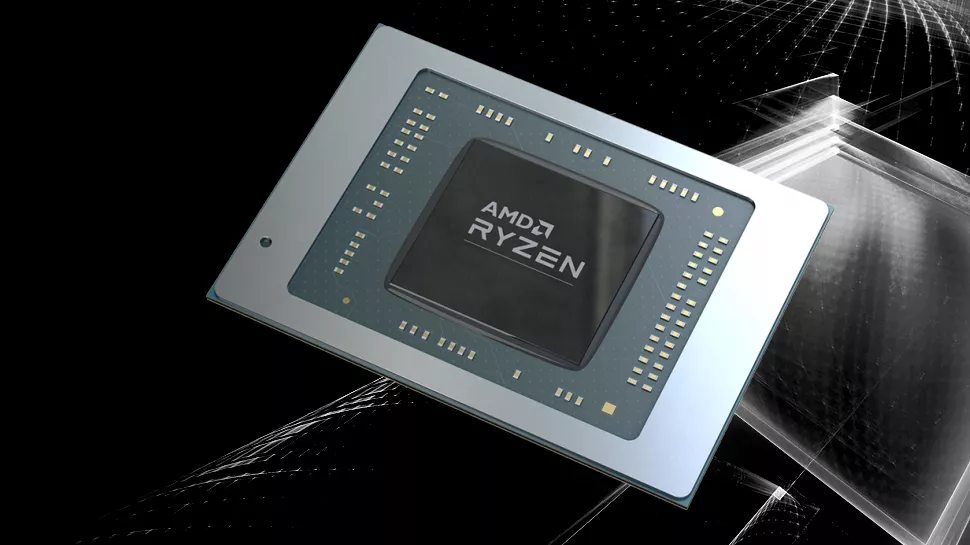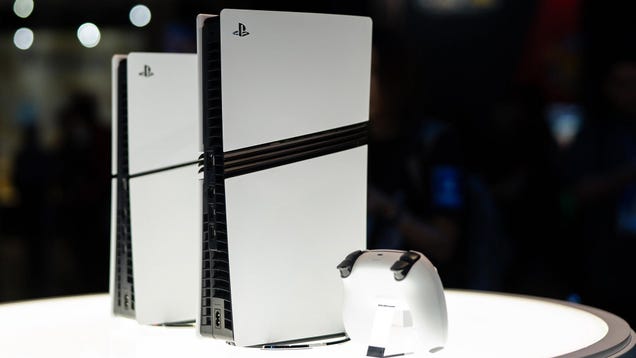
Due out next year, could revolutionise cheap gaming laptops and kill off cheap graphics cards.
A new roadmap from AMD confirms both its next-gen Ryzen 8000 CPUs with Zen 5 technology and an updated “Navi 3.5” graphics architecture will arrive next year. Some rumours suggest Navi 3.5 could enable integrated graphics with performance on par with an Nvidia RTX 3070.
AMD has mentioned Zen 5 previously, but this is the first mention of Ryzen 8000 (via Videocardz). It’s also the first official listing of a new Navi 3.5 graphics architecture.
The official roadmap doesn’t go into any details regards Navi 3.5. But a recent Twitter post from serial leaker Kepler_L2 suggests that it’s largely the RDNA 3 architecture with a few bits from RDNA 4.
More specifically, it’s said to have revised shader ALUs with support for new FP32 instructions and improvements to the geometry engine, but not new RDNA 4 scheduler and improved RT cores. What does all that mean for actual performance? Frankly, who knows.
Arguably the bigger news associated with this new Navi 3.5 graphics is that it’s rumoured by several sources including RedGamingTech to feature in a new mega APU variously referred to as Strix Halo or Sarlak that we’ve touched on previously. What everyone agrees on is that the integrated graphics in this new chip will top out at 40 Compute Units.
That’s the same as a current AMD Radeon RX 6700 XT and translates into 2,560 shaders or stream processors. The rumours indicate that graphics performance will be on par with an Nvidia RTX 3070. If true, that would be stellar for an integrated graphics solution, far faster than anything previously seen.
Of course, one area where integrated graphics have always struggled is memory bandwidth, what with both the CPU cores and the graphics sharing a memory controller and that controller typically being a narrow CPU-spec solution where high end GPUs have much wider buses with far more bandwidth.
This is our first sighting of “Ryzen 8000” and “Navi 3.5”. (Image credit: AMD)
Well, this rumoured APU is said to run a 256-bit memory bus rather than the usual 128-bit bus seen on most if not all CPUs and APUs for the PC. The catch is that the roadmap released by AMD and including the new CPU with Zen 5 cores and Navi 3.5 graphics explicitly covers chips for its existing AM5 desktop CPU socket and clearly indicates that AM5 continues through 2026.
AM5 only supports 128-bit memory interfaces, so this roadmap and the rumoured mega APU with RTX 3070 graphics performance do not fully align, at least in desktop terms. However, at this point there’s enough chatter about this new Strix Halo or Sarlak APU to have us excited. It’s probably real.
An APU with RTX 3070 level performance would be a pretty major game changer. Not only could it form the basis of more affordable laptops with decent gaming performance. If applied to the desktop, it would pretty much kill low-end graphics.
The caveat remains that it’s hard to square the rumoured specs of this big APU with the AM5 socket living on through 2026. The AM5 socket doesn’t seem to allow for the rumoured 256-bit memory bus on the desktop. The big APU will need to run in something other than AM5. That’s fine for mobile applications that have their own socket implementations. But it’s problematic for a desktop ecosystem built around AM5.
(Image credit: Future)
Best CPU for gaming: The top chips from Intel and AMD
Best gaming motherboard: The right boards
Best graphics card: Your perfect pixel-pusher awaits
Best SSD for gaming: Get into the game ahead of the rest
Anyway, as for what you can expect from Zen 5 and the CPU bit of Ryzen 8000, current rumours indicate it will maintain the existing AMD desktop CPU configurations of up to two CPU dies and 16 cores and carry over the same cache memory allocations, but improve IPC performance by around 20% and increase clock speeds to as much as 6GHz.
If true, that would make Zen 5 a decent but fairly incremental improvement over Zen 4 and the Ryzen 7000 family of CPUs you can buy today. On a side note, the new roadmap also seems to confirm that AMD’s Phoenix APU will arrive on the desktop for the AM5 socket at some point this year. The roadmap shows Ryzen 7000 including both Zen 4 and Navi 3.0 on the AM5 socket in 2023.
Currently, there is no desktop chip on AM5 that means that definition since all Ryzen 7000 desktop CPUs use RDNA 2 (AKA Navi 2.0) graphics. Only the Phoenix laptop and gaming handheld APU, branded both Ryzen Z1 and Ryzen 7040 Series, currently combines Zen 4 and RDNA 3.
Whatever, it won’t be too long to find out, because all of these chips, rumoured and officially roadmapped, should be available by the end of next year.






